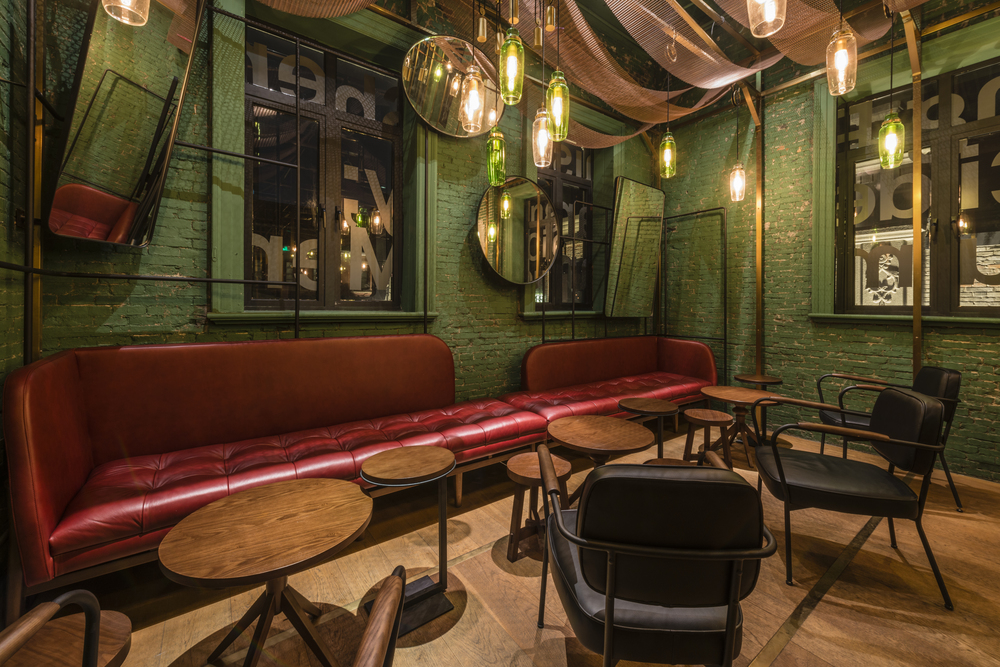A century ago, this handsome brick complex surrounding the Zhong Plaza in Shanghai’s central Jing’an district was home to the city’s first flower conservatory. Now it’s a nightlife hub housing design-forward restaurants and watering holes like Logan’s Punch, Logan Brouse’s boisterous punch bar that’s a throwback to vintage American culture and turn-of-the-century Shanghai. The bar is set in a revived early-1900s lanehouse with interiors that evoke the city’s traditional longtangs, the narrow, interconnected residential warrens with small courtyards that are under siege from 21st-century skyscrapers.
To bring his culturally clashing vision to fruition, Brouse tapped Neri & Hu, the Chinese architects known for their multidisciplinary approach to design. The duo employed the city’s indigenous materials throughout the space, including reclaimed wood, slate-hued brick, brass metalwork, and bamboo slats. The concept flows from the cocktail den’s eponymous drink, whose origins trace back to the 17th-century when it was invented by British East India Company sailors (the large-format communal bowl made it a natural party drink).
“Our design takes inspiration from the social quality of punch, reminding guests of the drink’s multiple origins and harkening simultaneously to both low-brow and high-brow cultural references,” says Lyndon Neri, half of the brain behind Neri & Hu. “The space’s layout is a direct interpretation of Shanghai’s lanes.”

